
Lluís Domènech i Montaner was a Catalan architect who was very much involved in and influential for the Catalan Modernisme català, the Art Nouveau/Jugendstil movement. He was also a Catalan politician.

Piera is a municipality that covers a large portion of the southeastern corner of the comarca of Anoia in Catalonia, Spain, on the left bank of the Anoia river. The agricultural land, mostly non-irrigated, is used for the cultivation of cereals, grapes, olives and almonds. The town itself hosts a number of light industries: textiles, plastics and construction materials. Tourism during the summer months is also relatively important for the local economy.

The Arc de Triomf is a memorial arch in Barcelona, Catalonia, Spain. It was built by architect Josep Vilaseca i Casanovas as the main access gate for the 1888 Barcelona World Fair. The arch crosses over the wide central promenade of the Passeig de Lluís Companys, leading to the Ciutadella Park that now occupies the site of the world fair. It is located at the northern end of the promenade, facing the Passeig de Sant Joan.

The Palau Nacional is a building on the hill of Montjuïc in Barcelona. It was the main site of the 1929 International Exhibition. It was designed by Eugenio Cendoya and Enric Catà under the supervision of Pere Domènech i Roura. Since 1934 it has been home to the National Art Museum of Catalonia.

Arenys de Mar is one of the main municipalities of the comarca of Maresme, Barcelona Province, Catalonia, Spain. It is situated on the coast between Caldes d'Estrac and Canet de Mar, about 40 kilometres northeast of Barcelona. As of 2022, it had a population of 16,155.

Josep Maria Subirachs i Sitjar was a Spanish sculptor and painter of the late 20th century. His best known work is probably the Passion Facade of the basilica of the Sagrada Família in Barcelona. He was controversial, as he did not make any concessions to the style of the architect who designed the building, Antoni Gaudí.

Plaça de Francesc Macià is a square in Barcelona, Catalonia, Spain. Located in one of the main business areas of the city, it is one of the most transited points of Barcelona. It is crossed by Avinguda Diagonal and several other major thoroughfares: Avinguda de Josep Tarradellas, Travessera de Gràcia, Carrer del Comte d'Urgell and Avinguda de Pau Casals. It is part of the Sarrià-Sant Gervasi district, even though it borders two other districts of Barcelona: Les Corts and Eixample.

El Poblenou is an extensive neighborhood of Barcelona’s Sant Martí district that borders the Mediterranean Sea to the south, Sant Adrià del Besòs to the east, Parc de la Ciutadella in Ciutat Vella to the west, and Sant Andreu to the north. Considered one of the best areas of the city, the neighborhood was once its own town, entirely separate from Barcelona proper.
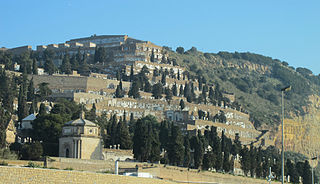
Montjuïc Cemetery, known in Catalan as Cementiri del Sud-oest or Cementiri de Montjuïc, is located on one of the rocky slopes of Montjuïc hill in Barcelona.

The Reial Acadèmia Catalana de Belles Arts de Sant Jordi is a Catalan art school located in Barcelona. The president is the architect Jordi Bonet i Armengol.

Josep Llimona i Bruguera was a Spanish sculptor. His first works were academic, but after a stay in Paris, influenced by Auguste Rodin, his style drew closer to modernisme. He was very prolific, and exhibited in Catalonia, Madrid, Paris, Brussels and Buenos Aires. Some of his monumental work is familiar to Barcelona residents and visitors alke.

Diagonal Mar i el Front Marítim del Poblenou is a neighborhood in the Sant Martí district of Barcelona, Catalonia, Spain.

The Parc de la Ciutadella is a park on the northeastern edge of Ciutat Vella, Barcelona, Catalonia, Spain. For decades following its creation in the mid-19th century, this park was the city's only green space. The 31 hectares grounds include the city zoo, the Palau del Parlament de Catalunya, a small lake, museums, and a large fountain designed by Josep Fontserè.
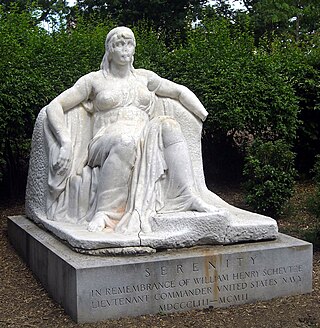
Serenity is a public artwork by Catalan artist Josep Clarà i Ayats, located at Meridian Hill Park in Washington, D.C., United States. Serenity was originally surveyed as part of the Smithsonian's Save Outdoor Sculpture! survey in 1993.
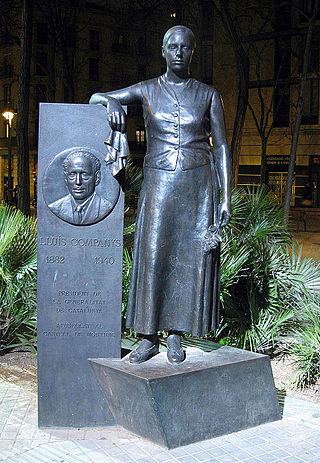
Conxita Julià i Farrés, also known as Conxita de Carrasco, was a Catalan woman noted for her dealings with Lluís Companys, President of Catalonia, in the 1930s, and for her poetry. Julià died in January 2019 at the age of 98.

Oriol Bohigas i Guardiola was a Spanish architect and urban planner, known for his work in the modernization of Barcelona.
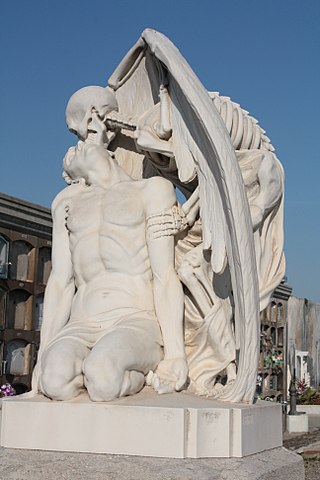
The Kiss of Death is a marble sculpture located in Poblenou Cemetery in Barcelona. The sculpture is believed to have been crafted by Jaume Barba in 1930, as his signature is present on the side of the sculpture. However, some suggest that it might have been designed by Barba's son-in-law, Joan Fontbernat. The sculpture serves as an example of memento mori, portraying death as a winged skeleton bestowing a kiss on the forehead of a young man.

Public art in Barcelona is a designated group of monuments and outdoor sculptures in the city. The artworks in city's architecture and network of museums, parks, and gardens, put an artistic stamp on the Catalan capital. Public art in the city developed in the 19th century, although the first municipal commission was the 1673 monument to Saint Eulalia in Pedró Square.
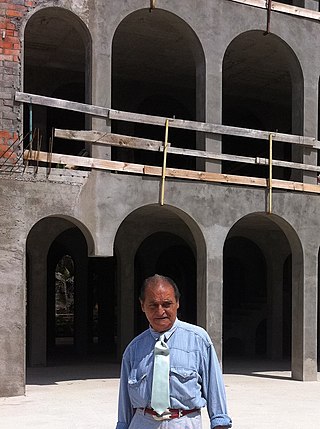
Xavier Corberó i Olivella was a prominent Catalan artist, best known for monumental public sculpture and his palatial house complex in Esplugues de Llobregat near Barcelona. He has been described as "widely considered the most important Catalan artist since Gaudí," as "one of Spain’s most celebrated sculptors" and as having "perhaps influenced Barcelona more than any artist since Gaudí."

Emilio Heydrich Martínez, was a German-Cuban merchant, entrepreneur and landowner, son of Fernando Heydrich Klein and María-Candelaria Martínez y Valdés. Heydrich was married to Antonia Cubero y Casals and their daughter Aida Heydrich was married to the President of the Manufacturers of Cigars and Cigarettes of Cuba, Theodore Garbade.





















